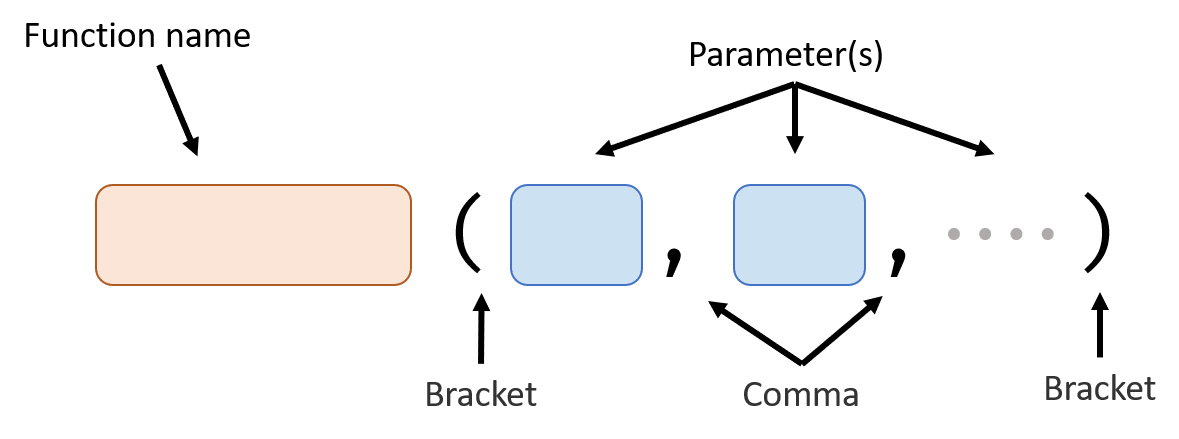Basic Function
A function performs a per-defined task when you use it (also known as “when you call it”).
Now, we can only use functions that are pre-defined by python. In the Advanced Function handout, we will learn how to define a function by ourselves.
Here’s the full process of using a function:

Basic Structure

Parameter(s)
This is the place where you give data to the function.
You can don’t give a function any parameter, one parameter or multiple parameters. Parameters are separated by commas.
For example: (The following code is just for demonstrate how to give data to a function, it can’t actually run because those functions are not defined yet.)
Return Value
This is how you get new data from the function.
A function can return no value or one value. You can assign the value returned from a function to a variable.
For example: (The following code is just for demonstrate how to get value returned from a function, it can’t actually run because those functions are not defined yet.)
How to Describe a Function
Knowing how to describe a function is very important when you are trying to figure out how to use a function.
Signature
Signature of the function is the function name and the parameter it takes. For example, the signature of the
printfunction isprint (data)Parameters
Explain what does each parameter means. For example,
dataparameter means the dataprintfunction will show in the shell.Return value
Describe what and how many value the function will return. For
printfunction, it returns no value.
print Function
Usage: output a value
Signature:
print (data)Parameters:
Name Value Type Meaning data any type The data will show in the shell Return value: None
str Function
Usage: convert a number type value to string type value
Signature:
str (number)Parameters:
Name Value Type Meaning number Number The number you want to convert to string Return value: same number, but is in string type.
Next: Control Flow